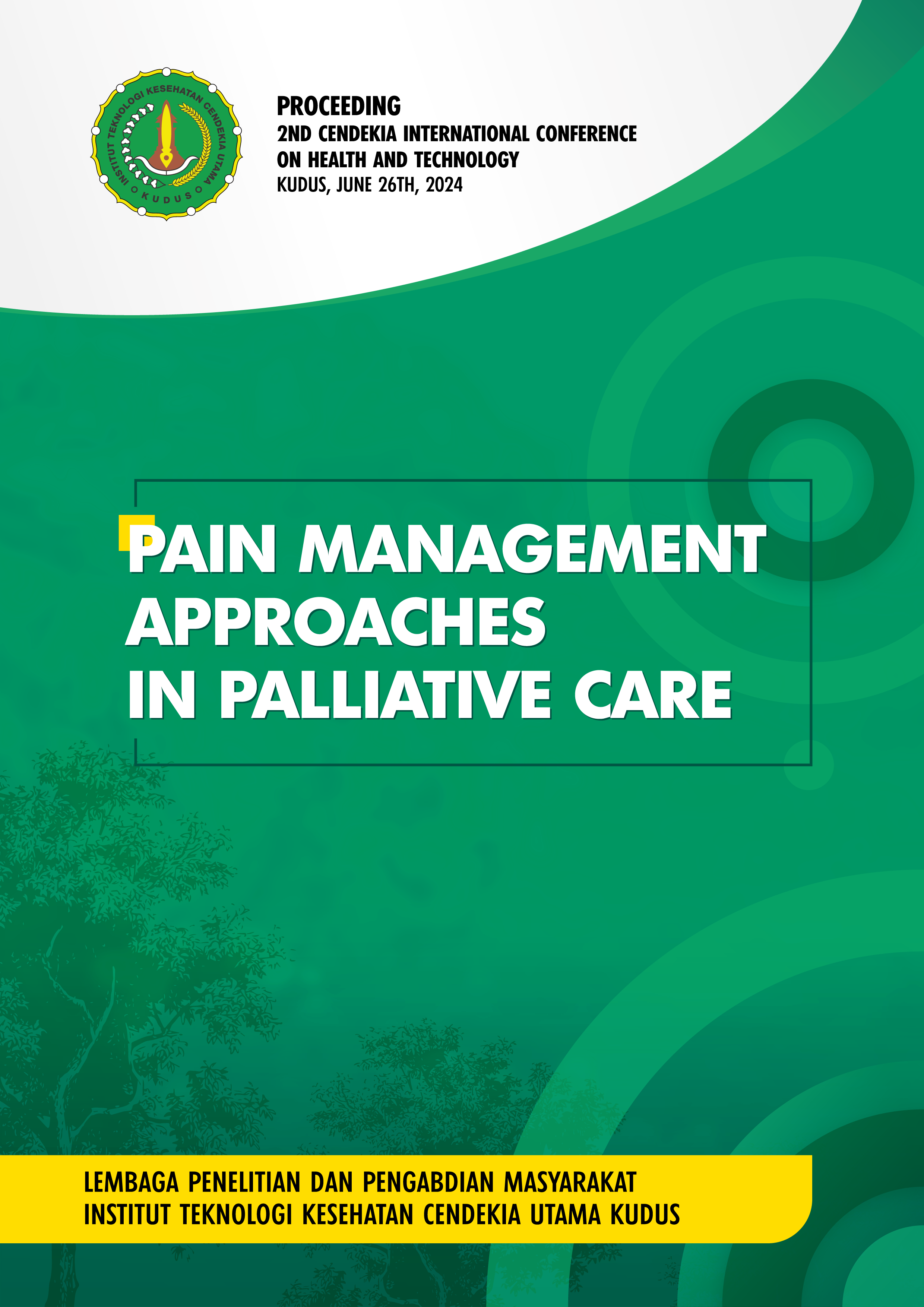Level of Knowledge of Outpatients with the Habit of Handwashing with Soap in Infection Prevention and Control in Hospitals
Main Article Content
Abstract
Hospitals are places that are full of risk for sources of infection with high numbers of microorganisms. Visitors, especially patients, can become carriers that spread germs in the hospital environment. Patients have an important role in controlling nosocomial infections. One effort that can be done to prevent infection is washing hands, this is done because hands are often agents that carry germs and cause pathogens to move from one person to another. Washing hands with water and soap can more effectively remove dirt and dust mechanically from the surface of the skin and significantly reduce the number of disease-causing microorganisms such as viruses, bacteria and other parasites. The aim of the research was to determine the level of knowledge of outpatients regarding the habit of washing hands with soap. in infection prevention and control in hospitals. This research uses a quantitative method using a cross sectional design, the sampling technique in this research uses a purposive sampling technique, where the sample size in this research is 30 people. Inclusion criteria in this study included outpatient respondents who were willing to become research respondents, by signing an informed consent sheet and respondents being able to read and write. The research instrument used is a questionnaire that has been tested for validation and reliability. The data analysis technique used in this research is bivariate analysis with the chi-square test which is carried out to determine whether or not there is a relationship between the two variables according to the results of filling out the questionnaire, namely the knowledge and behavior questionnaire and so on. The data was analyzed using IBM SPSS Statistics version 21. Based on the results of research that has been carried out, with a sample size of 30 respondents, the results showed that respondents with good knowledge and good behavior in terms of the habit of washing hands with soap were 20 respondents (90.9%), respondents with knowledge of good hand washing habits but bad behavior as many as 2 respondents (91.9%). So from the statistical test results, the p value = 0.000 (α < 0.05). This shows that there is a relationship between the knowledge variable and the behavior of washing hands with soap.
Downloads
Article Details
References
Bimerew, M., & Muhawenimana, F. (2022). Knowledge, attitudes, and practices of nurses towards hand washing in infection prevention and control at a psychiatric hospital. International Journal of Africa Nursing Sciences, 16(December 2021). https://doi.org/10.1016/j.ijans.2022.100399
Budiman dan Riyanto. (2013). Kuesioner Pengetahuan dan Sikap Dalam Penelitian Kesehatan. Salemba Medika.
Caroline, W. (2016). Infeksi Nosokomial. Nuha Medika.
CDC. (2016). National and State Healthcare Associated Infections Progress Report. https://www.cdc.gov/hai/data/archive/2016-HAI-progress-report.html%0D
Cordita, R.N., Soleha, T.U., dan Mayasari, D. (2019). Perbandingan Efektivitas Mencuci Tangan Menggunakan Hand Sanitizer dengan Sabun Antiseptik pada Tenaga Kesehatan di Ruang ICU RSUD Dr. H. Abdul Moeloek. Jurnal Agromedicine, 6(1).
Darmadi. (2017). Infeksi Nosokomial Problematika dan Pengendaliannya. Salemba Medika.
Dewi, Najihah, A. (2021). Modul Praktikum Keperawatan Dasar. Adab.
Ervira, F., Panadia, Z. F., Veronica, S., & Herdiansyah, D. (2021). Penyuluhan Cuci Tangan Pakai Sabun (CTPS) dan Pemberian Vitamin untuk Anak-Anak. Jurnal Kreativitas Pengabdian Kepada Masyarakat (Pkm), Vol 4(No 1), 234–239. https://www.unicef.org/indonesia/sites/unicef.org.indonesia/files/2020-05/Panduan-Praktis-untuk-Pelaku-Bisnis-dalam-mendukung-WASH-2020.pdf
Heriyati, Hatisah, & A. (2020). Hubungan Pengetahuan dengan Pencegahan dan Pengendalian Infeksi Nosokomial di Rumah Sakit. Jurnal Pendidikan Kesehatan, 87–92.
Irawan E. (2022). Hubungan Tingkat Pengetahuan Keluarga Pasien Dengan Perilaku Cuci Tangan Di Rumah sakit. Jurnal Keperawatan BSI, 10(1), 112–121.
Kemenkes RI. (2017). Pedoman pencegahan dan pengendalian infeksi.
Kementerian Kesehatan Republik Indonesia. (2018). Data dan Informasi Profil Kesehatan Indonesia.
Mariana, H. E. R., Zainab, & Kholik, H. S. (2015). Hubungan Pengetahuan Tentang Infeksi Nosokomial Dengan Sikap Mencegah Infeksi Nosokomial Pada Keluarga Pasien Di Ruang Penyakit Dalam Rsud Ratu Zalecha Martapura. Jurnal Skala Kesehatan, 6(2), 1–7.
Mubarak, W. . (2017). Promosi Kesehatan untuk Kebidanan. Salemba Medika.
Mumpuningtias, E. D., Aliftitah, S., & Illiyini, I. (2019). Hubungan Tingkat Pengetahuan dengan Perilaku Cuci Tangan Menggunakan Handrub pada Keluarga Pasien di Ruang Bedah RSUD dr. H. Moh. Anwar Sumenep. Jurnal Ilmiah Keperawatan Stikes Hang Tuah Surabaya, 12(2). https://doi.org/10.30643/jiksht.v12i2.31
Notoatmodjo, S. (2014). Promosi Kesehatan dan Perilaku Kesehatan. Rineka Cipta.
Pauzan, D. (2017). Hubungan Pengetahuan Dengan Perilaku Cuci Tangan iswa Di Sekolah Dasar Negeri Kota Bandung. 5(1), 18–23.
Randan, J. R., & Sihombing, R. M. (2020). Tingkat Pengetahuan dengan Perilaku Mencuci Tangan Pengunjung di Satu Rumah Sakit Swasta Indonesia Tengah. Jurnal Ilmiah Ilmu Keperawatan Indonesia, 10(3), 118–124.
Sapardi, dkk. (2018). Analisis pelaksanaan manajemen pencegahan dan pengendalian healthcare associated infections di rsi ibnusina. Jurnal Endurance, 3(2), 358–366.
Siregar& Amalia. (2013). Farmasi Rumah Sakit : Teori dan Penerapan. EGC.
Susanthy Kue Paudi, H. (2022). Gambaran Praktik Five Moment Cuci Tangan Pada Perawat Di Puskesmas. Journal Syifa Sciences and Clinical Research, 2(2), 91–98. https://doi.org/10.37311/jsscr.v2i2.15453
Wawan, A., & Dewi, M. (2017). Teori & Pengukuran Pengetahuan, Sikap, Dan Perilaku Manusia (Kedua). Nuha Medika.
World Health Organization. (2009). WHO guidelines on hand hygiene in health care, First Global Patient Safety Challenge Clean Care is Safer Care. WHO Perss.
Zakeri, H., Ahmadi, F., Rafeemanesh, E., & Saleh, L. A. (2017). The knowledge of hand hygiene among the healthcare workers of two teaching hospitals in Mashhad. Electronic Physician, 9(8), 5159–5165.

